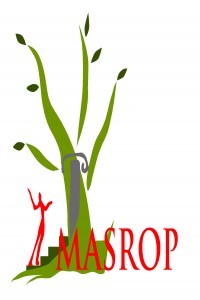KÖPRÜ MÜHENDİSLERİ OLARAK ROMA LEJYONLARI: İMPARATORLUĞUN DOĞU SINIRINDAKİ KÖPRÜ ÖRNEKLERİ ÜZERİNDEN BİR İNCELEME
Görev yaptıkları bölgelerin güvenliğinden sorumlu olan Roma lejyonları, aynı zamanda bu bölgelerdeki imar faaliyetlerini de yürütmüşlerdir. M.S. 1. yüzyılın ikinci yarısından itibaren imparatorluğun doğu sınırı olarak kabul edilen Fırat Nehri’nin batısında konuşlanan lejyonlar da öncelikle askeri yollar ve nehrin kolları üzerine köprüler inşa etmişlerdir. İnşa yazıtlarına ve tespit edilebilen buluntulara göre, İmparatorluk Dönemi’nde bölgede lejyon inşası üç köprü bulunmaktadır. Bu köprüler yol ağının kesintisiz biçimde devam edebilmesini sağlamıştır. Köprülerin bulundukları yol güzergahları, mimari üslupları ve inşa malzemeleri, imparatorluğun askeri hareketliliğinin ve doğu sınır politikasının anlaşılması için önemlidir.
Anahtar Kelimeler:
Roma İmparatorluğu, Fırat Nehri, Doğu Sınır, Lejyon, Köprü
The Roman Legions as Bridge Engineers: A Review on Examples of Bridges on the Empire's Eastern Frontier
The Roman legions, who were responsible for the security of the regions they served, also carried out construction activities in these regions.Since the second half of the 1st century AD the legions stationed in the west of the Euphrates River, which was accepted as the eastern border of the empire, primarily built military roads and bridges over the branches of the river. According to the construction inscriptions and the finds that can be identified, there were three legion-built bridges in the region during the Imperial Period. These bridges have ensured that the road network could continue without intervention. The road routes, architectural styles and construction materials of the bridges are important for understanding the military mobility and eastern border policy of the empire.
Keywords:
Roman Empire, Euphrates River, Eastern Frontier, Legion, Bridge,
___
- AMMINANUS MARCELLINUS Res Gestae (Roma Tarihi), Çev: S. Özgüler, İstanbul, 2019.
- CASSIUS DIO Historiae Romanae (Roman History), Volume I: Books 1-11. Çev: Earnest Cary, Herbert B. Foster. Loeb Classical Library 32. Cambridge, MA: Harvard University Press, 1914.
- HERODOTOS Histories (Tarih), Çev: M. Ökmen, İstanbul, 2016.
- PROKOPIOS De Aedificiis (Buildings), The Loeb Classical Library, Çev: H. B. Dewing, London, 1949.
- TACITUS Annales, The Loeb Classical Library, Çev: C.H. Moore ‐ J. Jackson, London, 1962.
- VITRUVIUS De Architectura (Mimarlık Üzerine On Kitap), Çev. S. Güven, Şevki Vanlı Mimarlık Vakfı, 2013.
- ALBUSTANLIOĞLU, T.: 2015 “Zeugma (Arulis/Ehneş) Taş Ocaklarında İsmi Belirlenen Bir Başka Lejyon: Legio IIII Flavia Felix”, Anadolu 41, s. 135-151.
- BLÖMER, M., E. WINTER: 2011 Toros ve Fırat arasındaki Tanrılar Ülkesi: Kommagene, Homer, İstanbul.
- COMFORT, A. vd.: 2000 “Crossing the Euphrates in Antiquity: Zeugma Seen from Space”, Anatolian Studies 50, s. 99-126. COMFORT, A., R. ERGEÇ: 2001 “Following the Euphrates in Antiquity: North-South Routes Around Zeugma”, Anatolian Studies 51, 2001, s. 19-49.
- COMFORT, A.: 2002 “Legio IIII Scythica”, Zeitschrift für Papyrologie und Epigraphik 138, s. 275-276.
- 2008 Roads on the Frontier Between Rome and Persia: Euphratesia, Osrhoene and Mesopotamia from AD 363 to 602, 1, 2008.
- 2010 "Güney Doğu Anadolu’daki Roma köprüleri / Roman Bridges of South-Eastern Anatolia", Güney Doğu Anadolu Araştırmaları Sempozyumu: 30 Nisan - 1 Mayıs 2009, İstanbul, s. 157-173.
- 2011 “Roman Bridges Of South-East Anatolia”, L'Anatolie des peuples, des cités et des cultures (IIe millénaire av. J.-C. – Ve siècle ap. J.-C.). Colloque international de Besançon - 26-27 novembre 2010. Volume 2, s. 315-342.
- CUMONT, F.: 1917 Etudes syriennes. Paris
- DUSSAUD, R.: 1927 Topographie historique de la Syrie antique et medieval, Paris: Geuthner.
- EDWELL, P. M.: 2008 Between Rome and Persia. The Middle Euphrates, Mesopotamia and Palmyra under Roman Control, Routledge Monographs in Classical Studies, Kanada.
- EVANS, J. K.: 1981 “Political Patronage in Imperial Rome: The Appointment of Marius Celsus as Governor of Syria in AD 72”. Epigraphische studien 12, s. 215-224.
- FRENCH, D. H.: 1983 “New Research on the Euphrates Frontier: Supplementary Notes 1 and 2”, ed: S. Mitchell, Armies and Frontiers in Roman and Byzantine Anatolia, BAR 156, s. 71-103.
- FORBES, R. J.: 1934 Notes on the History of Ancient Roads and Their Construction, Amsterdam.
- GAZZOLA, P.: 1963 Ponti Romani, Firenze.
- GÖRKAY, K.: 2017 “Zeugma Lejyon Yerleşkesi: Yeni Araştırmalar, Sonuçlar ve Ön Değerlendirmeler”, Anadolu/Anatolia 43, s. 147-166.
- HOLDER, P. A.: 1980 Studies in the Auxilia of the Roman Army from Augustus to Trajan, BAR, Oxford.
- HORST, B.: 2013 Roads and Bridges of the Roman Empire. Stuttgart/London.
- HUNTINGTON, E.: 1902: “Through the Great Canon of the Euphrates River”, The Geographical Journal 20, 2, s. 175-200.
- MAXFIELD, V. A.: 1981 The Military Decorations of the Roman Army, University of California.
- MITFORD, T. B.: 1980 “Cappadocia and Armenia Minor: Historical Setting of the Limes”, ed: H. Temporini ve W. Haase, Aufstieg und Niedergang der römischen Welt II, 13, s.1169-1228.
- NAUMANN, R.: 1963 “Die hethitische Brücke über die Schlucht bei Büyükkaya (Bogazköy)”, Mitteilungen der Deutschen Orient-Gesellschaft zu Berlin 94, s. 24-32.
- O’CONNOR, C.: 1993 Roman Bridges, Cambrigde.
- SMITH, W.: 1901-14 Dictionary of Greek and Roman Antiquities, London.
- WAGNER, J.: 1977 “Legio IIII Scythica in Zeugma am Euphrat”, Limesforschungen 10, s. 517-539.
- WEBSTER, G.: 1979 The Roman Imperial Army of the First and Second Centuries, London.
- WATSON, G. R.: 1969. The Roman Soldier, Bath.
- YILDIRIM, E. 2011 Pers Hakimiyetinin Bitiminden Bizans Hakimiyetinin Başlangıcına Kadar Olan Dönemdeki Antik Çağ Yazarlarının Eserlerinde Orta Fırat Bölgesi, Selçuk Üniversitesi Eskiçağ Tarihi Anabilim Dalı Doktora Tezi, Konya.
- Yayın Aralığı: Yılda 2 Sayı
- Başlangıç: 2007
- Yayıncı: Uğur ALANYURT
